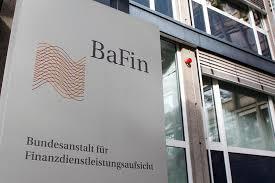Coverage of funds classified according to one of two key articles in the EU sustainable finance disclosure regulation (SFDR) is uneven across Europe, EFAMA has reported on the basis of a market survey.
The survey is the first time that the European asset management trade body collected data on so-called Article 8 and Article 9 funds. It said its data collection exercise offered a more complete picture of the UCITs and AIF markets compared with data from commercial data providers, which tended not to have such as good an overview of the AIF market and its institutional funds.
In a report about its survey findings, EFAMA said the uneven geographical coverage by Article 8 and 9 funds could be explained by various factors, including different interpretations by national regulators of the disclosure regulation, the delayed implementation of supporting detailed rules, and varying maturity levels of ESG fund markets between EU member states.
“Once the regulatory uncertainty and outstanding operational issues of SFDR and the taxonomy-related disclosures are resolved, we can expect a better investor experience, especially for retail investors with sustainability preferences based on the recently introduced ESG amendments under MiFID II,” EFAMA said.
Caveating its survey results as presenting “a first picture of a market that remains in flux,” the association reported that net assets of SFDR Article 8 funds totalled €3.7trn as at the end of March 2021, and €340bn for Article 9 funds.
There was a relatively high concentration in a limited number of countries. According to EFAMA, the main domiciles of SFDR Article 8 funds are Luxembourg (35%), France (16%), the Netherlands (13%), Sweden (13%) and Ireland (9%), with the net assets of these five domiciles amounting to 85% of total net assets of SFDR Article 8 funds. These are funds that “promote environmental and social characteristics”.
The highest domestic market share of Article 8 products was in Sweden, at 92%, with Germany’s lowest, at 6%, besides Greece, Poland and Hungary. EFAMA suggested several factors could explain Sweden’s high market share, including a less strict interpretation of what is meant by “promote” in SFDR Article 8.
The relatively low share of SFDR Article 8 funds in Germany, meanwhile, could be explained by the importance of Spezialfonds for institutional investors, “for which the SFDR classification is of less relevance,” according to EFAMA.
It said another possible reason was the strict interpretation of the SFDR itself by BaFin, the regulator.
“Once the regulatory uncertainty and outstanding operational issues of SFDR and the taxonomy-related disclosures are resolved, we can expect a better investor experience”
EFAMA
With regard to Article 9 funds, so-called “dark green” funds, Luxembourg accounted for more than half of the total net assets, followed by France (16%) and the Netherlands (9%). Domestic market shares ranged from 4.1% in Belgium to 0.1% in Germany, Hungary and Spain.
Looking at ESG investing beyond the fund-level, EFAMA said asset managers in Europe (including Switzerland and the UK) applied an ESG investment approach to €11trn of assets at the end of the first quarter, slightly higher than the 209 estimate.
The relatively limited growth since the end of 2019 could indicate that the introduction of SFDR has prompted asset managers to be more cautious when reporting the amount of assets for which they use some form of ESG investment approach, EFAMA said.
Obstacles to delivery
Overall, the association said it fully supported objectives linked to SFDR and that the regulation had the ability to deliver on these, but that “there is still some way to go and a few obstacles along the way”.
“A coherent and consistent application of SFDR since it became applicable on 10 March 2021 has not proved possible due to the absence of the necessary Level 2 measures (regulatory technical standards),” it said, describing this as an “awkward situation”.
It said legal uncertainty around the categorisation of funds persisted, and that the absence of detailed EU harmonised rules relating to fund transparency was also causing significant national divergences.
However, it said that as of 1 July 2022, the industry expected to fully apply the SFDR legislation.
“While the fund management industry may face difficulties and uncertainties in the implementation process, we are confident that these challenges will fade once the regulatory framework is complete and stakeholders become more familiar with the new obligations,” EFAMA said.










No comments yet